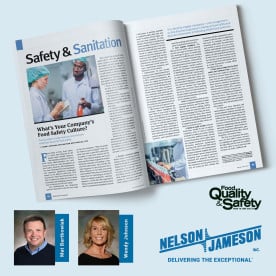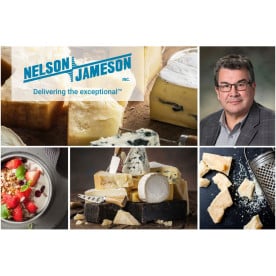Monthly Archives: January 2016
- January 27, 2016
On March 22nd, Nelson-Jameson is excited to offer our “pH Workshop” at the University of Wisconsin-Baraboo/Sauk County. The course will be facilitated by Nelson-Jameson’s in-house pH expert, Steve Zdun. The workshop is perfect for an array of food and beverage industry producers to learn more about the basic principles of successful, and effective pH analysis in the processing environment.
Participants will garner insight into a host of topics, including: sample preparation techniques, choosing the best electrode/meter for the job, the importance of Automatic Temperature Compensation, calibration techniques, cleaning/maintenance procedures, and basic trouble shooting. Steve has also planned time for a question and answer session, as well as one-on-one consultation. By the end of the session that runs from 9am-12pm, class participants will leave with a constructive base of information to take with them into their facilities, as well as receive a
- January 13, 2016
When preparing 3M™ Petrifilm™ for use in your environmental monitoring program there are different hydration methods to follow, depending on the test and the context in which it is used.
For air or direct contact procedures where Aerobic Count, Coliform Count, E.coli/Coliform Count, Rapid Coliform Count or Enterobacteriaceae Count Petrifilm™ are being used, hydrate plates with 1 mL of appropriate sterile diluent. Allow hydrated plates to remain closed for a minimum of 1 hour before use. If using Staph Express Count Petrifilm™, hydrate plates with 1 mL of appropriate sterile diluent. Refrigerate hydrated plates for a minimum of 3 days before using.
For air testing using either Yeast and Mold Count or Rapid S. aureus Count Petrifilm™, hydrate plates with 1 mL of appropriate sterile diluent. Allow hydrated plates to remain closed for a minimum of 1 hour before use.
- January 06, 2016
At Nelson-Jameson, we like to remain involved and in-the-know. We offer continued training for our employees, attend and exhibit at many trade shows, and are involved in networking, educational and philanthropic organizations that range from community-minded to industry-oriented. One of these trade associations to which Nelson-Jameson belongs is FISA, the Food Industry Suppliers Association.
FISA is trade group dedicated to promoting distribution in high purity industries, such as food and beverage, dairy, pharmaceutical, personal care and biotechnology. Its members are comprised of distributors and manufacturers who go to market through distribution. Nelson-Jameson has been involved with FISA since its inception more than 50 years ago, and we’ve found tremendous value in the networking and educational opportunities provided by FISA.





